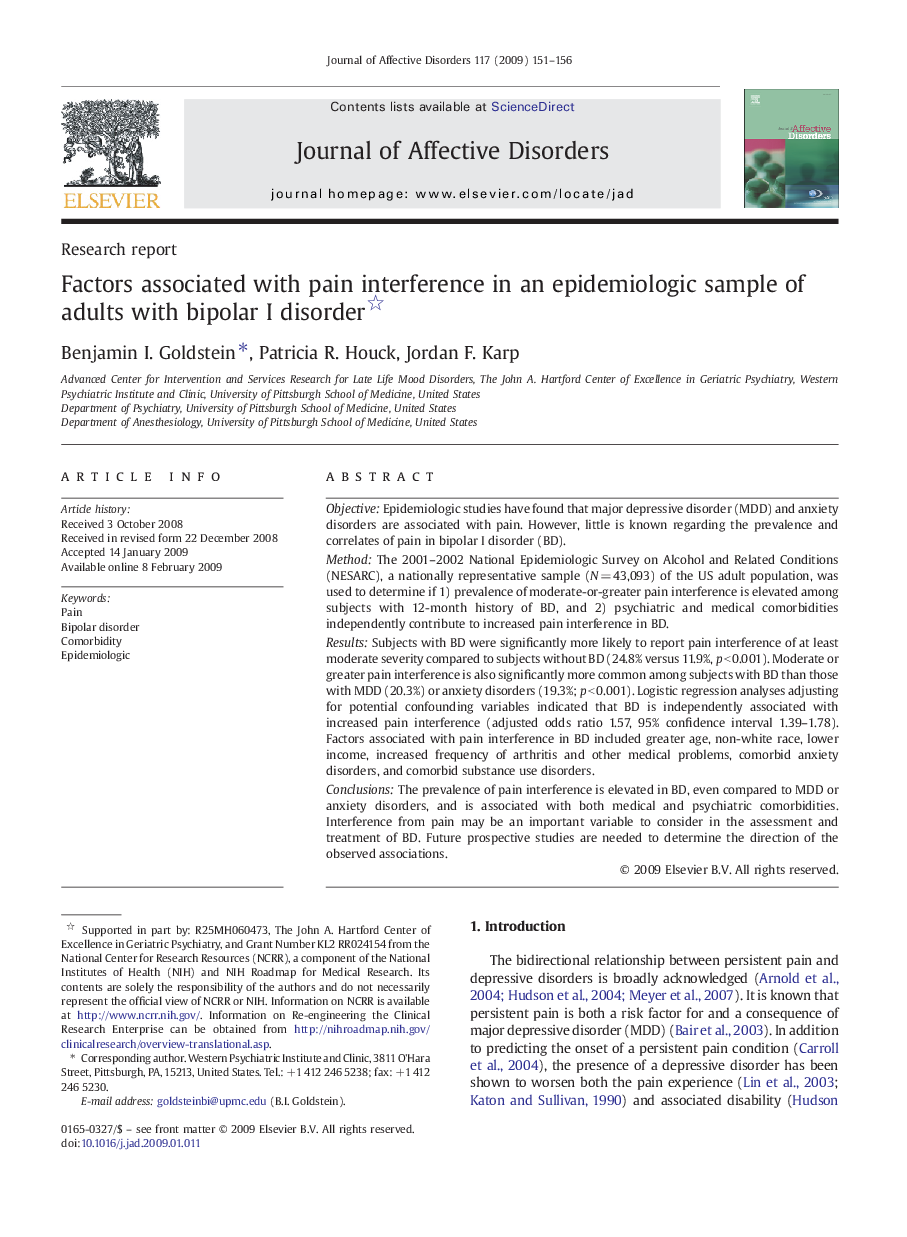| Article ID | Journal | Published Year | Pages | File Type |
|---|---|---|---|---|
| 4187202 | Journal of Affective Disorders | 2009 | 6 Pages |
ObjectiveEpidemiologic studies have found that major depressive disorder (MDD) and anxiety disorders are associated with pain. However, little is known regarding the prevalence and correlates of pain in bipolar I disorder (BD).MethodThe 2001–2002 National Epidemiologic Survey on Alcohol and Related Conditions (NESARC), a nationally representative sample (N = 43,093) of the US adult population, was used to determine if 1) prevalence of moderate-or-greater pain interference is elevated among subjects with 12-month history of BD, and 2) psychiatric and medical comorbidities independently contribute to increased pain interference in BD.ResultsSubjects with BD were significantly more likely to report pain interference of at least moderate severity compared to subjects without BD (24.8% versus 11.9%, p < 0.001). Moderate or greater pain interference is also significantly more common among subjects with BD than those with MDD (20.3%) or anxiety disorders (19.3%; p < 0.001). Logistic regression analyses adjusting for potential confounding variables indicated that BD is independently associated with increased pain interference (adjusted odds ratio 1.57, 95% confidence interval 1.39–1.78). Factors associated with pain interference in BD included greater age, non-white race, lower income, increased frequency of arthritis and other medical problems, comorbid anxiety disorders, and comorbid substance use disorders.ConclusionsThe prevalence of pain interference is elevated in BD, even compared to MDD or anxiety disorders, and is associated with both medical and psychiatric comorbidities. Interference from pain may be an important variable to consider in the assessment and treatment of BD. Future prospective studies are needed to determine the direction of the observed associations.
